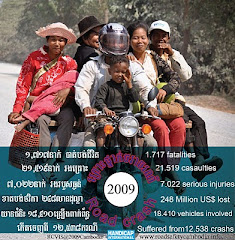Crash Risk
Research1 has shown that the risk of a crash causing death or injury increases rapidly, even with small increases above an appropriately set speed limit.
Speeding greatly increases the risk of injury and death. Research on travelling speeds and crash involvement has calculated the crash risk of driving at certain speeds over the speed limit in a 60 km/h zone.
Risk of a casualty crash at speeds greater than 60 km/h, relative to travelling at 60 km/h, where the speed limit is 60 km/h. | ||
| Speed | Relative Risk | |||||||
|---|---|---|---|---|---|---|---|---|
| 60 | 1.00 | |||||||
| 65 | 2.00 | |||||||
| 70 | 4.16 | |||||||
| 75 | 10.60 | |||||||
| 80 | 31.81 | |||||||
| 85 | 56.55 | |||||||
For example a driver travelling at 65 km/h in a 60 zone is twice as likely to have a serious injury or fatality crash as a driver travelling at the speed limit. Driving at 70 km/h in a 60 km/h zone, the driver is more than 4 times as likely to crash.
Based on this research it can be concluded that
In a 60 km/h speed limit area, the risk of involvement in a casualty crash doubles with each 5 km/h increase in travelling speed above 60 km/h.
There are three reasons that small reductions in speed make such a large difference to risk.
1. Small differences in speeds mean differences both in time to collision and ability to avoid a crash.
Even if a vehicle cannot be stopped in the available distance, the collision can still sometimes be avoided. When a driver is speeding there is less time for both that driver and any other road user (either a pedestrian or another driver) to:
- Recognise danger
- Decide on an evasive action (brake, swerve)
- Complete the evasive action
Furthermore, a vehicle travelling at a higher speed is more difficult to manoeuvre.
2. Small differences in vehicle speeds, before braking begins, can result in large differences in impact speeds.
The diagram below shows the relationship between speed, stopping distance and impact speed. For each travelling speed both the stopping distance for vehicles travelling 50 km/h to 90 km/h are shown and the impact speeds for vehicles travelling faster than 50km/h at the point where the vehicle travelling at 50 km/h would have stopped (i.e. at 29m).
The following example illustrates how impact speed can differ between two cars with only a 10 km/h difference in travelling speeds:
...consider two cars travelling side by side at a given instant, one car travelling at 50 km/h and the other overtaking at 60 km/h. Suppose that a child runs onto the road at a point just beyond that at which the car travelling at 50 km/h can stop. The other car will still be travelling at 44 km/h at that point2.
3. Even small differences in impact speed make a large difference to the probability of serious injury.
The reason for this difference is that the force of the crash varies with the square of the impact speed. For example, a 70 km/h collision has about twice the force of a 50 km/h collision.
Speed & Alcohol Crash Risk Comparisons:
Researchers1 from the Road Accident Research Unit in Adelaide have calculated the comparable crash risks for speed and alcohol.
They determined that driving at 65 km/h in a 60 km/h speed zone exposes you to the same crash risk as someone with a Blood Alcohol Content (BAC) of 0.05; whilst travelling at 68 km/h is equivalent to driving with a BAC of 0.08.
Resource:RTA

No comments:
Post a Comment